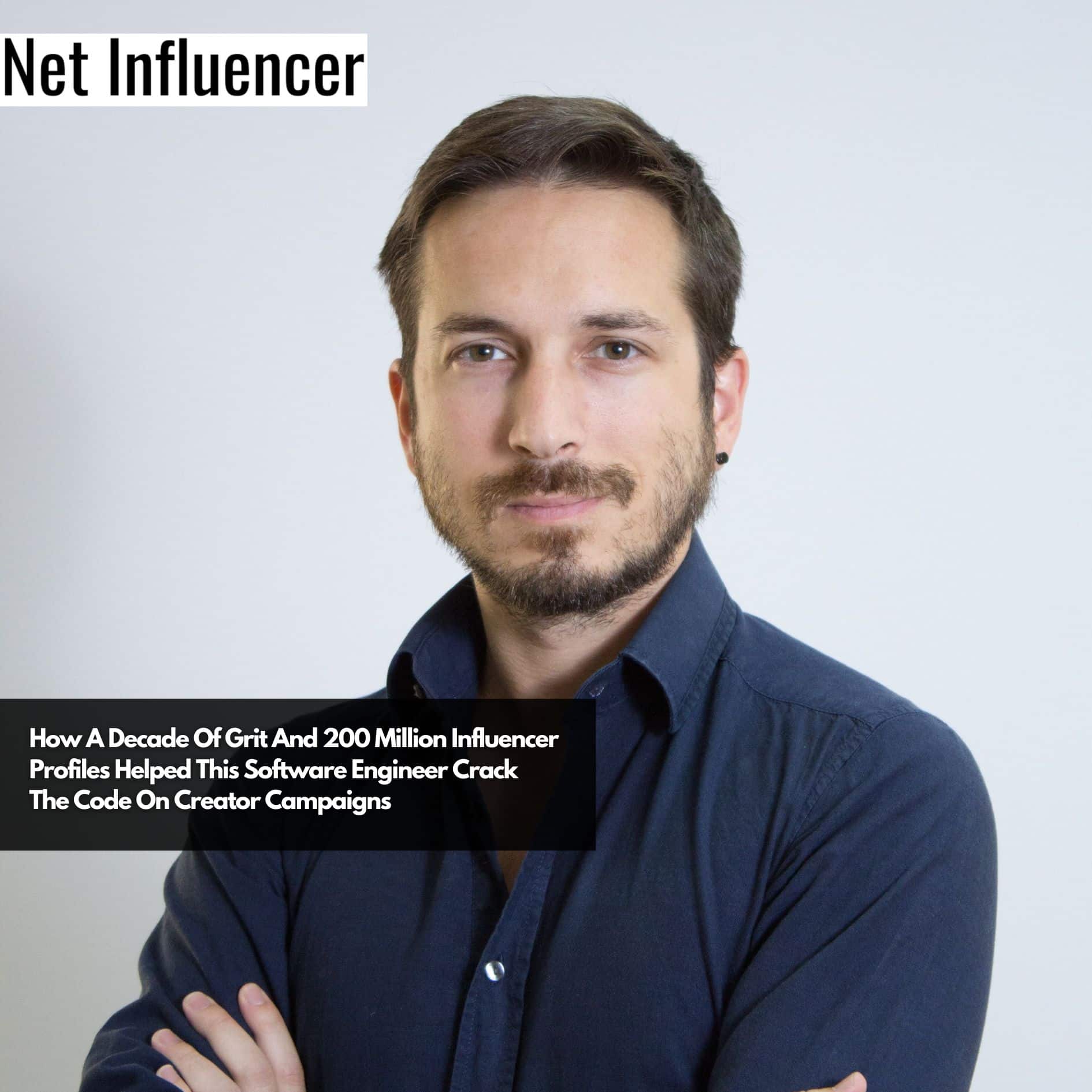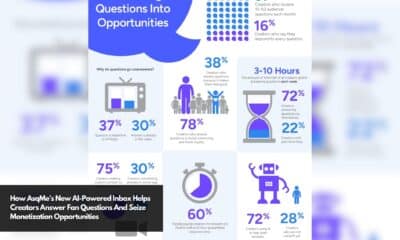Technology
How A Decade Of Grit And 200 Million Influencer Profiles Helped This Software Engineer Crack The Code On Creator Campaigns
Daniel Sánchez co-founded the influencer marketing platform Influencity in 2014 after noticing the rise of influencers and bloggers, especially in the United States. The software engineer aimed to give brands a new way to work with creators beyond traditional ad channels.
Today, Influencity is a B2B SaaS platform that helps brands run global influencer marketing campaigns. Its offerings include influencer discovery tools using data science, campaign management, e-commerce integrations, and reporting analytics. Daniel cites key challenges in Influencity’s journey, such as hiring talent, developing tech products customers want, pivoting business models, and navigating cultural norms when expanding globally.
Recounting Influencity’s Beginnings
Daniel has an extensive background in the technology industry, but he never imagined he’d found one of the pioneering influencer marketing platforms. “I am a two—or three-time entrepreneur,” he says. Influencity is actually the second big company that I founded.”
A software engineer by training, Daniel spent the first part of his career as a technical consultant for major firms like Accenture and ISBAN. “I worked on big international projects that allowed me to travel extensively to places like the UK, Germany, Ireland, Australia, and the United States,” he recalls.
Observing the rise of influencers and bloggers, particularly in the U.S., around 2013 inspired Daniel to start Influencity with co-founders a year later. They aimed to create an influencer marketing solution for an advertising industry he felt was dominated by traditional media players and channels.
“We wanted to empower this industry to give voice to other types of channels beyond traditional ones,” Daniel says. “To democratize the advertising industry because you are always being impacted by ads from big companies. With influencers, the message comes from humans you can align with.”
Today, Influencity is a B2B SaaS platform that helps brands, agencies, and e-commerce companies run full-service influencer marketing campaigns globally. “Our mission is to help brands get awareness and sales through the voices of people with values – influencers who can inspire with their content,” Daniel states. He believes influencer marketing represents a more ethical approach to advertising than traditional tactics.
What differentiates Influencity, Daniel says, is its affordable pricing, easy-to-use platform, and focus on connecting brands with influencers rather than operating an influencer marketplace.
Influencity’s Comprehensive Offering for Influencer Marketing
Beyond facilitating influencer marketing campaigns, Influencity provides an array of solutions for brands and agencies. “We have three main verticals—the influencer marketing hub, social hub, and social listening hub—that all work together,” Daniel explains.
The social hub allows companies to schedule content, track the performance of corporate social accounts, monitor conversations, and respond to comments. The social listening hub analyzes what audiences are discussing on social media related to a brand, competitors, keywords, hashtags, and topics. “We’ll tell you who is talking about what, the sentiment, emotions – absolutely everything you want to track,” Daniel says.
The influencer marketing hub is the core product for identifying, vetting, and managing influencer partnerships. It contains a search engine that pulls over 200 million profiles across platforms like YouTube, Twitter, Instagram, and, soon, Twitch to find both niche and broad influencers.
An influencer relationship management (IRM) tool stores data on each influencer a brand wants to collaborate with. “You get deep insights into their performance, audience demographics, psychographics, brand partnerships, and things like fake followers,” Daniel states. This informs which influencers to activate.
Campaign management tools handle details like sharing discount codes, sending products, tracking sales conversions, and reporting. According to Daniel, “The reporting acts like Google Analytics but specifically for influencer marketing.”
He stresses the importance of data in making informed influencer decisions beyond vanity metrics like follower counts. “We provide around 50 data points per profile – engagement rates, audience demographics, brand affinities, conversion rates, and more. Brands can analyze what metrics matter to their specific goals.”
While Influencity doesn’t operate an influencer marketplace, Daniel says it aims to create authentic partnerships through educational content and tools like email templates that suggest best practices for outreach. “We can’t control every collaboration, but we try to guide brands and influencers on how to create authentic relationships and content.”
Keeping Pace with a Fast-Moving Industry
“Staying ahead of all the changes and meeting the needs of this industry is very, very hard,” Daniel admits. “The influencer marketing space has evolved so much, especially in the last year.”
Influencity’s dedicated in-house product and tech team constantly monitors social network platforms and policy updates. “If we know a platform is changing something, we often have that information before it goes live. This allows us to build our tools accordingly and stay one step ahead,” Daniel explains.
When caught off-guard by industry shifts, Influencity must adapt rapidly. The company holds quarterly meetings to discuss customer pain points and where the industry is heading, then prioritizes tech improvements and new product development. “It’s a very changing environment. Sometimes we build something over 3 months, and then 3 months later, one platform changes, and we must delete all that work,” Daniel says.
Facilitating Successful Influencer Campaigns
Ultimately, Influencity provides the software tools but lets customers build their own influencer marketing strategies and select which creators to activate. Daniel cites one food company client in Canada running massive influencer campaigns each month.
“They’re reaching around 5,000-6,000 influencers monthly and getting a 60-80% response rate, which is very challenging at that scale with just a couple of employees,” he notes. “But that’s where our platform really helps – facilitating outreach to tens of thousands of influencers annually.”
How Influencity Tackles Scaling Obstacles
According to Daniel, some of the biggest hurdles in building Influencity include hiring the right talent and cultivating a strong company culture. “Hiring good people and creating an environment where they are happy, have fun, and share the company’s values is very challenging for any business,” he states.
Developing a successful tech product that customers want to buy also proved difficult. “You can build the most beautiful product, but if customers don’t purchase it, it’s worthless,” Daniel says.
One of Influencity’s most daunting challenges was pivoting in 2020 from a hybrid agency/software model to a full software-as-a-service (SaaS) company. “It was very challenging because an agency selling services operates completely differently than a tech product company. 95% of our revenue came from Spain, whereas now it’s only 10-15%,” Daniel explains.
Over 4 years, Influencity scaled its customer base to 70 countries. “It was successful long-term, but very hard making that transition,” Daniel admits.
Navigating Cultural Differences Across Markets
Expanding globally also revealed the diversity of cultural norms and preferences Influencity needed to accommodate. “You realize how completely different humans are from one region to another,” Daniel says. “What works well in Europe may not work at all in Asia. Those cultural shocks happen a lot.”
While Influencity’s efforts are currently concentrated in the Americas and Europe, Daniel says the team still has more affinity with those markets than Asia. “We don’t always know how to handle conversations there because the cultural differences are vast properly. But it’s also very fun to navigate.”
Tips for Brands New to Influencer Marketing
Daniel’s top advice for brands starting with influencer marketing: “Don’t just start blindly messaging a thousand influencers, asking them to post about your product for free. When influencers don’t respond or react negatively, it can really damage your reputation.”
He stresses that brands must first educate themselves on influencer marketing best practices before attempting any campaigns. “If you don’t have the expertise in-house, hire an experienced influencer marketing agency. They’ve handled thousands of campaigns and can get you started properly.”
His second key recommendation is deploying the right technology tools from the outset. “Just like a sales team uses a CRM, you need professional influencer tech rather than just using spreadsheets. It will help you operate much more efficiently.”
The Future of Influencity’s Platform
Influencity has launched several new product updates in recent months. These include a social media management “Social Hub,” an “Influencer Payments” feature to streamline compensating creators at scale, and enhanced social listening capabilities.
“Our social listening is becoming more powerful,” Daniel says. “Beyond sentiment analysis, it will detect audience emotions like sadness, happiness, or anger in response to the online conversations around your brand.”
While Influencity doesn’t currently operate as an influencer marketplace, that will change with the upcoming launch of a “Creator App.” This will allow influencers to collaborate more easily with Influencity’s brand clients.
“Creators will be able to create media kits to promote themselves, share bio links, and handle invoicing and payments,” Daniel explains. “It won’t be a typical marketplace, but it will facilitate the brand-creator collaboration process significantly.”



















